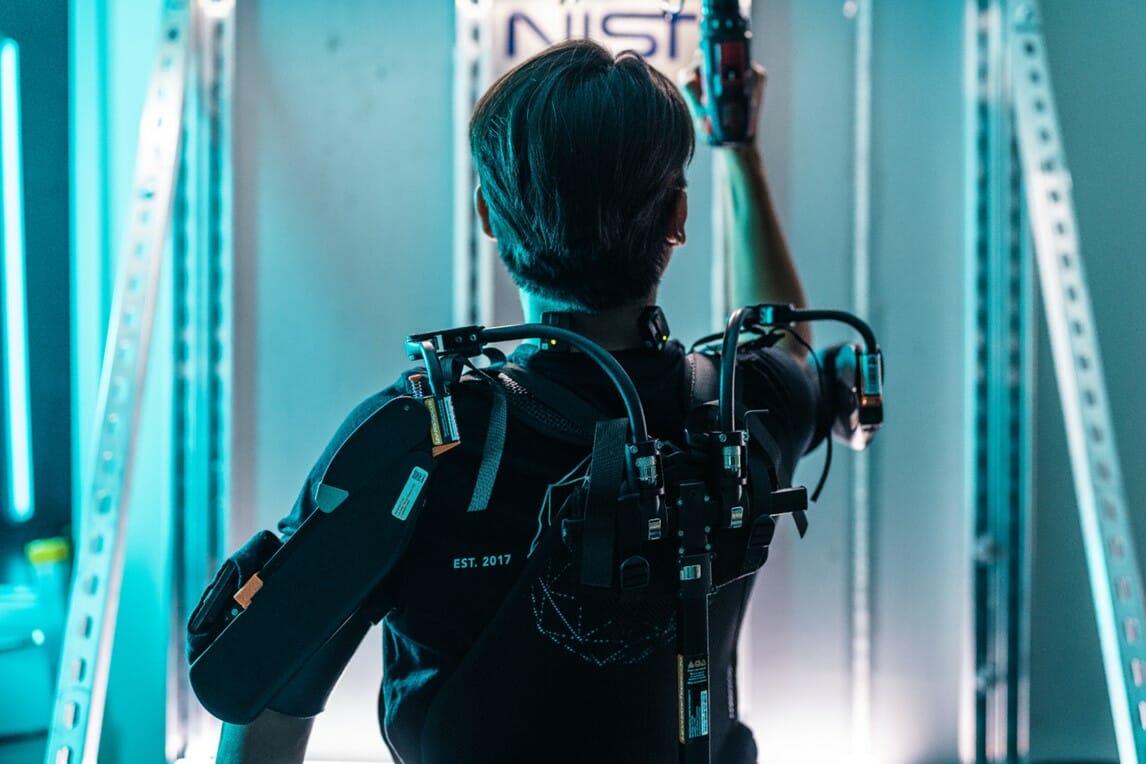A technology transformation is blooming in the Sonoran Desert, as the Partnership for Economic Innovation’s Arizona WearTech Applied Research Center is shaping a new era of health tech innovation. With a track record of redefining health outcomes and propelling economic growth, wearable technology is catapulting Arizona into the forefront of innovation. The AZ WearTech Center has helped accelerate the development of dozens of wearable technology projects including GoX Labs’ PhenEx exoskeleton, Movement Interactive’s Hiji Band and Touchpoints’ Thodian. These innovations, powered by public-private partnerships, are changing the tech landscape in Arizona.
READ ABOUT INNOVATORS: 132 Arizona companies make Inc. 5000 list for 2023
Navigating the Health Tech Frontier: Applied Research Model Catalyzes Innovation
Wearable devices are an essential tool in the pursuit of holistic health and wellness. A staggering 75% of wearable tech users say that their health tangibly improved after using their devices, according to a report released by Deloitte. Leveraging this transformative potential, Arizona’s WearTech Center blends healthcare and economic development, while building our local health tech sector and cultivating an ecosystem of innovation.
For businesses, the adoption of wearable devices impacts bottom lines with better workplace safety, brain health, stress reduction, and more. Beyond individual health, this seismic shift toward digital health products has economic implications that fuel economic growth, job creation, and cements Arizona’s health tech innovation epicenter status.
AZ WearTech Center’s applied research model has proven successful, here are three Arizona wearable technology groundbreaking projects as examples of Arizona’s health tech transformation.
1. GoX Labs: Redefining Workforce Safety with PhenEx Exoskeleton
As workplace environments evolve, so do the challenges faced by the workforce. One of the critical concerns is the risk of injuries due to strenuous physical activities. According to a business case study for health and safety from the Occupational Health and Safety Administration (OSHA), in its 2021 Workplace Safety Index, Liberty Mutual estimated that employers paid more than $1 billion per week for direct workers’ compensation costs for disabling, nonfatal workplace injuries in 2018.
GoX Labs AKE Engineering and Phoenix Robotics Group, in collaboration with the WearTech Applied Research Center and Arizona State University’s mechanical engineering researchers, are tackling this issue with their innovative project: the PhenEx exoskeleton.
The PhenEx exoskeleton introduces a novel concept – a quasi-active exoskeleton that assists workers in performing physically demanding tasks like squatting and lifting. Leveraging sensor technology and spring elements, the exoskeleton activates precisely when needed, reducing the risk of injuries while maintaining natural motion during rest or other activities.
What sets this project apart is the collaborative framework fostered by the WearTech Center, connecting industry expertise with academic research. By bringing together the realms of research, innovation, and application, GoX Labs is changing the landscape of workplace safety and setting a precedent for interdisciplinary collaborations in Arizona’s tech sector.
2. Movement Interactive: Protecting Athletes and Soldiers with Hiji®Band
In the world of sports and military service, personnel safety is critical. According to a study conducted on concussed football athletes as reported by the National Library of Medicine, each concussion resulted in an average of $800 in healthcare costs. The enhancement of diagnostic capabilities are expected to yield lowered healthcare costs and improved personnel health outcomes. In partnership with Arizona State University’s BRAIN Center, Movement Interactive is making strides in this arena by developing the Hiji®Band. It is designed to detect potential head impacts, empowering the safety of athletes during training and games, and soldiers on the battlefield.
The collaboration between Movement Interactive and ASU’s BRAIN Center exemplifies the power of uniting leading neurotechnology researchers with industry experts. By developing, validating, and stress-testing the Hiji®Band, the Movement Interactive team aims to enable prolonged wear, study cumulative head impact effects, and address the long-term implications of head injuries.
Through the WearTech Center’s applied research model, Movement Interactive is bridging the gap between research and commercialization, transforming Arizona into an innovation hotspot.
3. TouchPoint Solution: AI-Powered Stress Relief with Thodian Stones
Amidst the adverse impact of escalating stress and anxiety on business productivity and wellness, TouchPoint Solution unveils an innovative solution: Thodian Tokens, the world’s first AI-powered stress-relieving devices. Collaborating with the WearTech Applied Research Center and Arizona State University’s Luminosity Lab, TouchPoint Solution is bringing to market technology wearables that significantly reduces stress levels in seconds.
The project combines TouchPoint’s scientifically proven BLAST® (Bi-Lateral Alternation Stimulation Tactile) Technology with AI advancements. This wearable device aims to relieve rapidly stress, improve sleep and enhance focus. By leveraging real-time biometric monitoring and closed-loop functionality, Thodian Tokens represent a breakthrough in managing stress and anxiety.
The AZ WearTech Center connects industry experts with interdisciplinary researchers. TouchPoint Solution’s collaboration with ASU’s Luminosity Lab highlights the potential of integrating AI with wearable technology, making strides in mental health solutions, and shaping Arizona’s reputation as a tech innovation hub.
Changing the Landscape: Arizona Wearable Technology Growth
These visionary projects are not just isolated ventures but emblematic of a broader trend in Arizona’s tech landscape. Wearable technology is rapidly evolving and gaining prominence, valued at $61 billion in 2022, with an expected compound annual growth rate of 14.6% from 2023 to 2030. It’s no surprise that Arizona is seeing its own growth in the industry.
The WearTech Center’s applied research model is a catalyst for accelerating product development and commercialization. By bridging academia, industry, and the public sector, it fosters innovation, drives economic growth, and positions Arizona as a leader in wearable technology solutions.
The Partnership for Economic Innovation’s dedication to fostering collaboration among businesses, community leaders, and researchers is amplifying this impact. Through partnerships between industry leaders and academic institutions across the state, projects are not only flourishing but also addressing real-world challenges.
Pioneering a Wearable Future
As wearable technology continues to transform industries and individual lives, Arizona’s tech landscape is shining brightly. GoX Labs’ PhenEx exoskeleton project, Movement Interactive’s advancements in athlete and soldier safety, and TouchPoint Solution’s AI-powered stress relief device are just a glimpse of this state’s innovative potential.
From enhancing workplace safety and athletic performance to revolutionizing stress management, these projects exemplify the spirit of collaboration, innovation, and progress within Arizona’s tech landscape. With the WearTech Center’s support and a commitment to interdisciplinary partnerships, the state is not just embracing change; it’s leading the charge toward a bright, wearable future.
Authors: Kathleen Lee is director of Partnership for Economic Innovation Arizona Applied Research Centers, Brad Jannenga is founder and executive chairman of Chassi, and Neil Giuliano is the former mayor of Tempe and president and CEO of Greater Phoenix Leadership.




